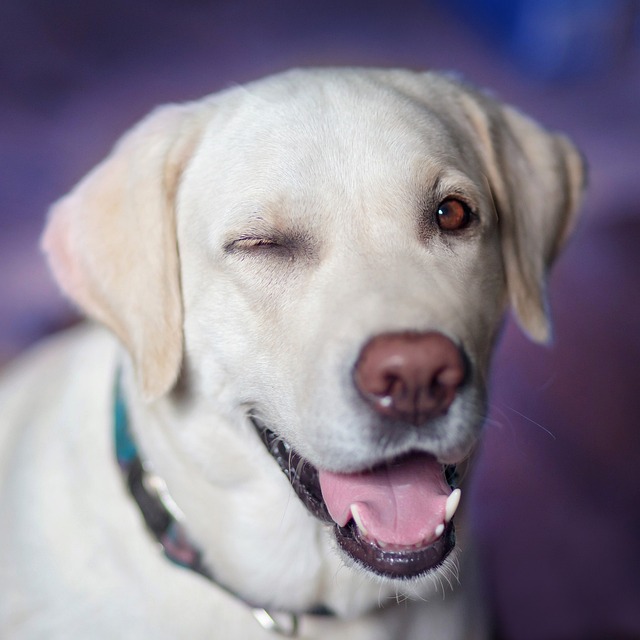Why Do Dogs Have Puppy Dog Eyes?
Puppy dog eyes, characterized by raised inner brows and large, soulful eyes, serve both evolutionary and social purposes:
- Evolutionary Advantage:
- Appealing to Humans: Over generations, dogs that exhibited facial features reminiscent of human infants were more likely to be cared for and protected. The appearance of puppy dog eyes triggers nurturing instincts in humans, fostering a stronger bond between dogs and their human companions.
- Social Communication:
- Expressing Emotion: Dogs use their facial expressions to communicate with humans. Puppy dog eyes convey a sense of innocence, vulnerability, and affection. This expression is a form of emotional communication, signaling to humans that the dog is not a threat and seeks positive interaction.
Learned Behaviors: Dogs are incredibly adaptive and observant animals. If a dog receives positive attention, affection, or treats when displaying certain behaviors, they are likely to repeat those behaviors. Therefore, when a dog receives attention and rewards in response to their adorable head tilt, smiling, or puppy dog eyes, they learn to use these expressions to their advantage.
Conclusion: While some aspects of a dog’s cuteness, such as the head tilt and puppy dog eyes, have physiological explanations related to vision, hearing, and evolutionary adaptations, the expression of cuteness is also shaped by learned behaviors and interactions with humans. Dogs are intuitive animals that quickly learn what behaviors elicit positive responses from their human companions, and they often use their charm to strengthen the bond with their owners.
Ultimately, whether dogs are born with innate cuteness or learn to be cute through positive reinforcement, their endearing expressions and behaviors contribute to the unique and heartwarming relationship between dogs and humans.
Here are some examples of cute behaviors and expressions displayed by dogs:
- The Play Bow:
- Behavior: When a dog lowers its front legs and raises its hindquarters, often wagging its tail, it’s known as the play bow.
- Purpose: The play bow is an invitation to play. It’s a friendly and submissive gesture, signaling that the following actions are all in good fun.
- Zoomies:
- Behavior: Dogs suddenly burst into a burst of high-energy running, often accompanied by wild turns and spins.
- Purpose: Zoomies are a way for dogs to release excess energy and express joy. It’s a common behavior, especially after periods of confinement or excitement.
- Nudging for Affection:
- Behavior: Dogs gently nudging their owners with their nose, seeking attention or affection.
- Purpose: Dogs nudge as a way to initiate interaction, show affection, or seek comfort. It’s a sweet way for dogs to communicate their desire for closeness.
- Curling Up in a Ball:
- Behavior: Dogs curling up into a tight ball when they sleep or rest.
- Purpose: This behavior is instinctual, as it helps dogs conserve body heat and protect vital organs. Additionally, it looks incredibly cute!
- Bringing Toys as Gifts:
- Behavior: Dogs bringing their favorite toys to their owners, often with wagging tails.
- Purpose: Dogs see their owners as part of their pack, and bringing toys can be a way of sharing and seeking approval. It’s a gesture of bonding and play.
- Paw Raising:
- Behavior: Dogs lifting one paw when sitting or standing.
- Purpose: This adorable behavior is often seen in small dogs and is a way for them to appear more endearing. It’s also sometimes used to get attention or signal a desire for something.
- Sitting on Your Feet:
- Behavior: Dogs sitting or lying down on their owner’s feet.
- Purpose: This behavior is a display of affection and a way for dogs to feel close and connected to their owners. It’s especially common when dogs are seeking comfort or reassurance.
- Cuddling:
- Behavior: Dogs snuggling up close to their owners, often leaning against them or lying on their laps.
- Purpose: Dogs are social animals, and cuddling is a way for them to bond with their human family. It provides comfort, warmth, and a sense of security.
- Tilting the Head in Confusion:
- Behavior: Dogs tilting their heads to the side when they are curious or confused.
- Purpose: The head tilt is an adorable expression that often occurs when dogs are trying to understand or focus on a particular sound. It’s charming and endearing to many dog owners.
- Rolling Over for Belly Rubs:
- Behavior: Dogs rolling onto their backs, exposing their belly for rubs.
- Purpose: Dogs show their vulnerability and trust by exposing their belly. It’s a submissive and affectionate behavior, and many dogs love receiving belly rubs.
These examples showcase the diverse and charming ways in which dogs express themselves and interact with their human companions. Each behavior adds to the unique and heartwarming relationship between dogs and their owners.



